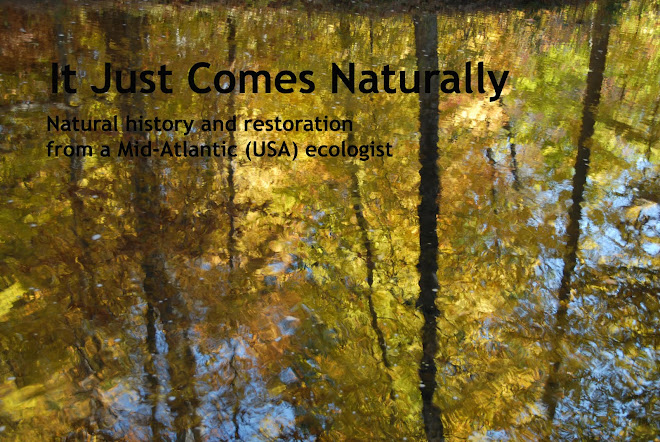 |
| Kali on the rail-trail through my preserve approaching a rock cut |
I wanted to get outside to enjoy the blue skies, the stark woodlands, and the low-angled sunlight.
 |
| American beech-dominated woodland slope |
Years ago, someone planted two cypress trees on the edge of the brook. Though they're outside their natural range (closest natural occurrence is in southern Delaware, about 50 miles south), the trees have survived and grown well. They even sport their characteristic knees.
 |
| Cypress knees |
 |
| The rock cut from the first image; I like this abstract play of angles, sunlight and shadows |
 |
| Large boulder in the shady woods |















































